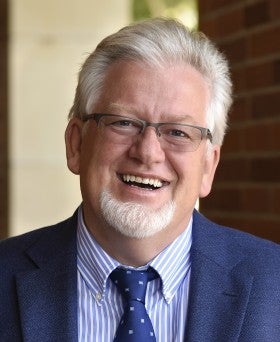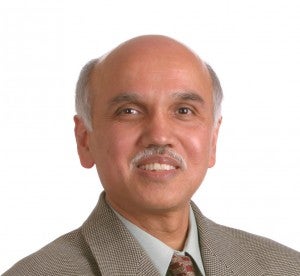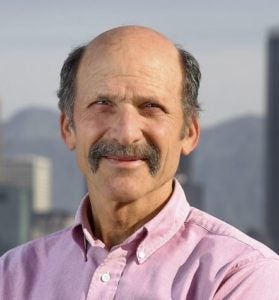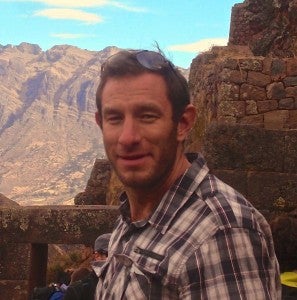Smoke-choked skies put many on edge
Smoke from the worst wildfires in California’s history is providing an alarming preview of how climate change will impact our everyday lives. While the fires have forced evacuations, the dirty air is trapping many indoors, impacting mood and exposing us to toxic particles. What’s more, rainfall hitting charred areas could trigger landslides. And of course, all of this is happening during a coronavirus pandemic. USC experts shed light on these topics.
Contact: Leigh Hopper at (310) 308-0405 or lhopper@usc.edu
 Norbert Schwarz, a Provost Professor of Psychology and Marketing at the USC Dornsife College of Letters, Arts and Sciences and the USC Marshall School of Business and an expert in mood, judgment and risk perception, says there’s a good reason behind your feelings of dread:
Norbert Schwarz, a Provost Professor of Psychology and Marketing at the USC Dornsife College of Letters, Arts and Sciences and the USC Marshall School of Business and an expert in mood, judgment and risk perception, says there’s a good reason behind your feelings of dread:
“The weird color of the sky — from orange to bloody red to oddly green — is upsetting because it drives home that the threat is close. It isn’t burning somewhere far away; it is right here and it is affecting you. Moreover, you can’t escape it because it is in the air you breathe, it surrounds you, and it can seep into your house. That’s very different from watching wildfires on TV or ‘knowing’ about climate change. It makes it palpable, local, and real.”
Contact: Norbert.schwarz@usc.edu
About that feeling of doom …
 “In the midst of COVID-19, anxiety and depression for most individuals is at its peak. Adjusting to changes in one’s life circumstances (e.g., losing a job, distancing from relatives and friends) without a clear endpoint is psychologically daunting.
“In the midst of COVID-19, anxiety and depression for most individuals is at its peak. Adjusting to changes in one’s life circumstances (e.g., losing a job, distancing from relatives and friends) without a clear endpoint is psychologically daunting.
“The orange skies resulting from the fires is another adjustment that we have been forced to make over the past few weeks. The dangerous air quality creates another risk in addition to COVID-19. Being stuck indoors with the orange and grey smoky skies poses an even greater risk for feelings of despair, hopelessness, and depressed mood.”
April Thames is an associate professor of psychology and psychiatry at the USC Dornsife College of Letters and Sciences. Her work focuses on the impact of chronic disease, discrimination, stress and adversity as well as resiliency on neurological and cognitive networks.
Contact: thames@usc.edu
What’s in that smoke plume?
 “Smoke contains soot particles that contain chemical carcinogens, as well as odor-free toxic gases that include carbon monoxide. The particles in the 2.5 micron range are the most damaging to the respiratory system, affecting the lungs and the heart as well. They are also major irritants to the eyes. Smoke can travel long distances, impacting population centers away from the fires.”
“Smoke contains soot particles that contain chemical carcinogens, as well as odor-free toxic gases that include carbon monoxide. The particles in the 2.5 micron range are the most damaging to the respiratory system, affecting the lungs and the heart as well. They are also major irritants to the eyes. Smoke can travel long distances, impacting population centers away from the fires.”
G. K. Surya Prakash is a professor and holder of the George A. and Judith A. Olah Nobel Laureate Chair in Hydrocarbon Chemistry at the USC Dornsife College of Letters, Arts and Sciences. He serves as the director of the Loker Hydrocarbon Research Institute.
Contact: gprakash@usc.edu
Reducing your exposure during exercise
 “Typically, the wind blows from the ocean inland (west to east) across Los Angeles, so the beach is a cleaner place to be. But in Santa Ana conditions, this wind pattern is reversed. In the current smoke-filled conditions, being by the ocean is no guarantee that the air quality is good. Check airnow.gov to see what the Air Quality Index (AQI) is in your area, and follow the recommended guidance.
“Typically, the wind blows from the ocean inland (west to east) across Los Angeles, so the beach is a cleaner place to be. But in Santa Ana conditions, this wind pattern is reversed. In the current smoke-filled conditions, being by the ocean is no guarantee that the air quality is good. Check airnow.gov to see what the Air Quality Index (AQI) is in your area, and follow the recommended guidance.
“Your COVID mask should provide some protection. An actual N95 or dust nuisance mask can do a pretty good job of protecting you from inhaling small particles and ash. Bandanas are not especially effective at stopping smoke, and single-layer cloth masks may only stop a small percentage of incoming smoke.
“Exercising indoors could be a reasonable option. You can improve indoor air quality by closing all doors and windows and placing a damp towel on the windowsill or door crack where air leaks blow into the house. Think about how to slow down your inhalation rate — less intense running or cycling, more relaxed walking or yoga. Try to find alternatives to get some exercise without over-exposing your lungs and body to the smoke and pollution.
Ed Avol, a lifelong runner, is a professor of clinical preventive medicine and chief of the Division of Environmental Health at the Keck School of Medicine of USC. He’s an expert on respiratory health, smog and health effects due to vehicle traffic.
Contact: avol@usc.edu
And then come the landslides …
 “All of us are eager to see the end of the wildfires raging along the west coast. We will only have a brief moment to catch our breath before winter rains begin to fall on the charred hillsides, producing the kinds of debris flows that devastated Montecito in January 2018.
“All of us are eager to see the end of the wildfires raging along the west coast. We will only have a brief moment to catch our breath before winter rains begin to fall on the charred hillsides, producing the kinds of debris flows that devastated Montecito in January 2018.
“With vegetation gone, and the soil properties changed by the fires, rainwater no longer sinks into the ground as easily. Instead, it builds up in the soil, eventually making a muddy mess that slides downhill. As the resulting debris flows travel downhill, they get bigger and bigger, with enough power to pick up large boulders and send them cascading into our hillside communities.
“It’s hard to predict just how bad it will be, but with more steep terrain burning this year, there’s a greater chance that we will see damaging landslides in some areas.”
Josh West is an assistant professor of geology at the USC Dornsife College of Letters, Arts and Sciences. He’s an expert in post-fire landslides, floods and debris flows that can occur during winter storms.
Contact: josh.west@usc.edu
# # #



